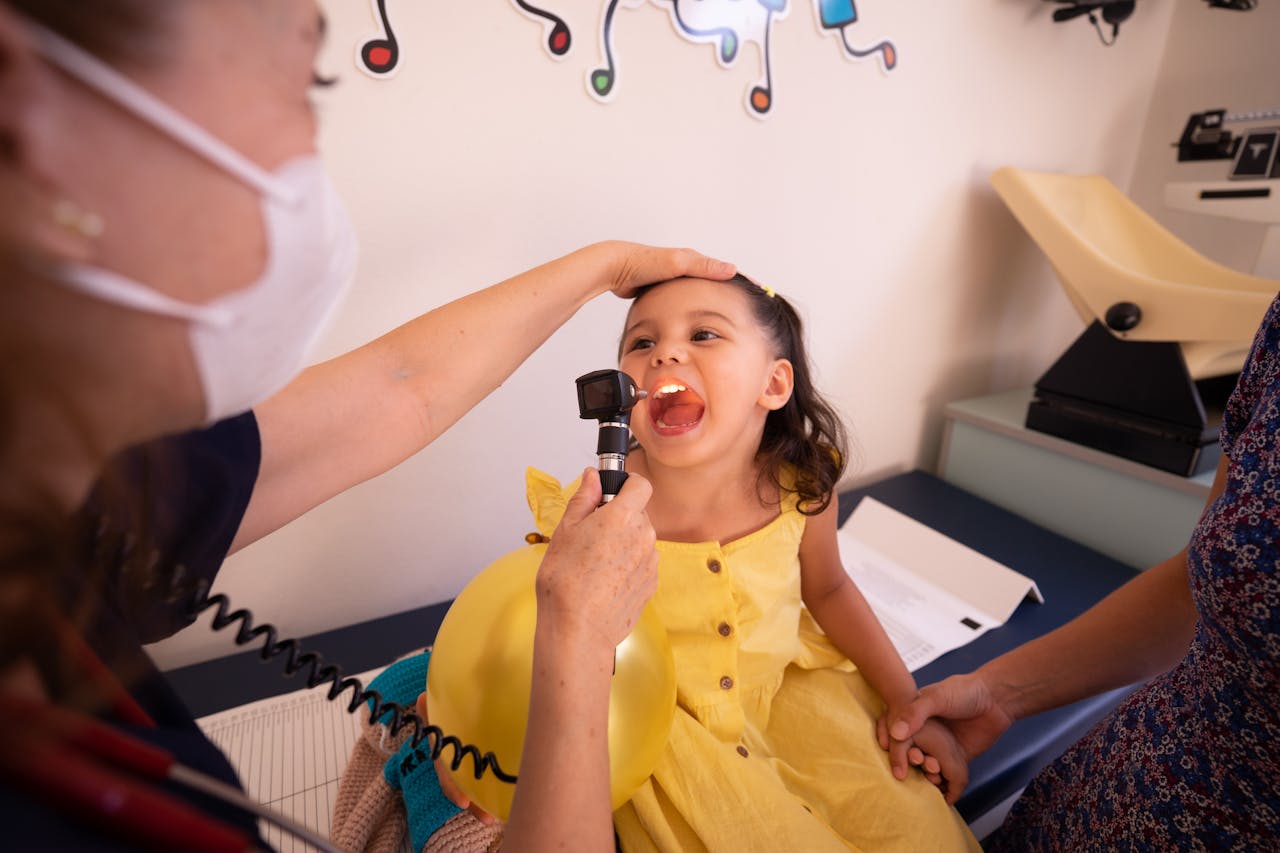Strep throat can sneak up fast—and sore-throat season often leaves parents wondering: “Is it just a virus, or something more serious?” As pediatricians, we know how critical it is to act early and correctly. In this in-depth guide, we’ll explore:
-
What strep throat is and why it’s different from viral sore throats
-
Signs and symptoms parents should watch for
-
How it’s diagnosed in a child’s exam
-
Treatment: why prompt antibiotics matter
-
Preventing spread in families and schools
-
How strep throat ties into your child’s overall health – including links to conditions like obesity or ear infections
You’ll also find helpful references to our other key articles—on childhood obesity and ear infections—because children’s health is multifaceted. Let’s begin.
1. Understanding What Strep Throat Really Is
-
The culprit: Strep throat is caused by Group A Streptococcus bacteria—not viruses.
-
Why it matters: Unlike viral sore throats, strep can lead to complications like rheumatic fever or kidney inflammation if left untreated. Early intervention by a pediatrician is crucial.
2. Recognizing the Telltale Signs
Common Symptoms:
-
Sudden onset of throat pain and difficulty swallowing
-
High fever (101°F or higher), often with chills
-
Swollen, tender lymph nodes under the jaw
-
White patches or streaks on the tonsils
-
Headache, stomach pain, or nausea (especially in younger children)
-
Absence of typical cold symptoms—no cough, runny nose, or hoarseness
Red Flags:
-
Stiff neck or rash
-
Reluctance to drink fluids
-
Ear pain or hearing changes (see link on ear infections)
If any red flags arise, it’s time to call the pediatrician right away.
3. Pediatric Diagnosis: What to Expect

During an office exam, your pediatrician will:
-
Examine the throat and neck
-
Check for fever, rashes, ear inflammation
-
Perform a rapid strep test (results in minutes)
-
Possibly confirm with a throat culture (takes 24–48 hours)
This dual-step ensures accurate treatment and prevents unnecessary antibiotics.
4. Antibiotics: Why Timing Matters
-
Symptoms begin to ease within 24–48 hours of starting antibiotics.
-
Reducing complications: Prompt treatment protects against rheumatic fever, scarlet fever, or kidney inflammation.
-
Limiting spread: Children are usually non-contagious 24 hours after beginning antibiotics.
At Gentle Pediatrics, we always weigh the benefits of treatment against the risks—and ensure it’s the right choice for your child.
5. Easing Discomfort During Treatment
Helpful strategies include:
-
Age-appropriate pain relievers (acetaminophen or ibuprofen)
-
Cold (popsicles) or warm (broth) soothing fluids
-
Soft, bland foods like oatmeal or scrambled eggs
-
Humidified air or saline gargles (for older kids)
Combine comfort care with follow-ups—particularly if your child has other health concerns, like weight issues you read about in our childhood obesity guide).
6. Preventing Spread at Home and in School
-
Encourage frequent hand-washing
-
Avoid sharing utensils or cups
-
Keep your child home until they’ve been on antibiotics for 24 hours and no longer have fever
-
Clean high-touch surfaces and change toothbrushes one week post-treatment
7. What If It Keeps Coming Back?
Recurring strep throat warrants deeper investigation:
-
Pediatricians may check for asymptomatic colonization
-
Antibiotic resistance or environmental factors could play a role
-
Sometimes referral to ENT specialists is needed to evaluate for tonsil removal
A pediatrician’s goal is to identify the cause and protect your child’s long-term well-being.
8. Complications You Should Never Ignore
Untreated strep throat can lead to serious issues:
-
Rheumatic fever: A rare but real risk
-
Post-streptococcal glomerulonephritis: Kidney inflammation
-
PANDAS: Immune-related behavioral changes in some children
Your pediatrician knows when to be vigilant—and when to refer.
9. Strep Throat in the Big Picture of Childhood Health
Illnesses don’t happen in a vacuum. Recurrent infections might affect sleep, school performance, and even eating habits—potentially intersecting with concerns like obesity or ear infections. That’s why pediatric care is holistic: we look at your child’s health and development together, not in isolation.
10. When to See the Pediatrician Immediately
Call your pediatrician if your child has:
-
A high fever that doesn’t resolve
-
Severe throat pain or swelling
-
Difficulty breathing or swallowing
-
Rash, stiff neck, or disorientation
Prompt care can prevent complications and help your child heal safely.
11. Building a Trusted Partnership
By sharing observations—sleep patterns, appetite changes, behavior—you help us go beyond treating one illness. We’ll support your child’s overall well-being from a pediatric lens. Whether it’s strep throat, obesity, or ear infections, we’re here to guide with evidence-based care, empathy, and expertise.
12. Final Takeaways

-
Strep throat is bacterial – early, accurate diagnosis matters
-
Antibiotics protect both your child and your family
-
Comfort care and prevention at home speed recovery
-
Ongoing health concerns deserve thoughtful pediatric coordination
